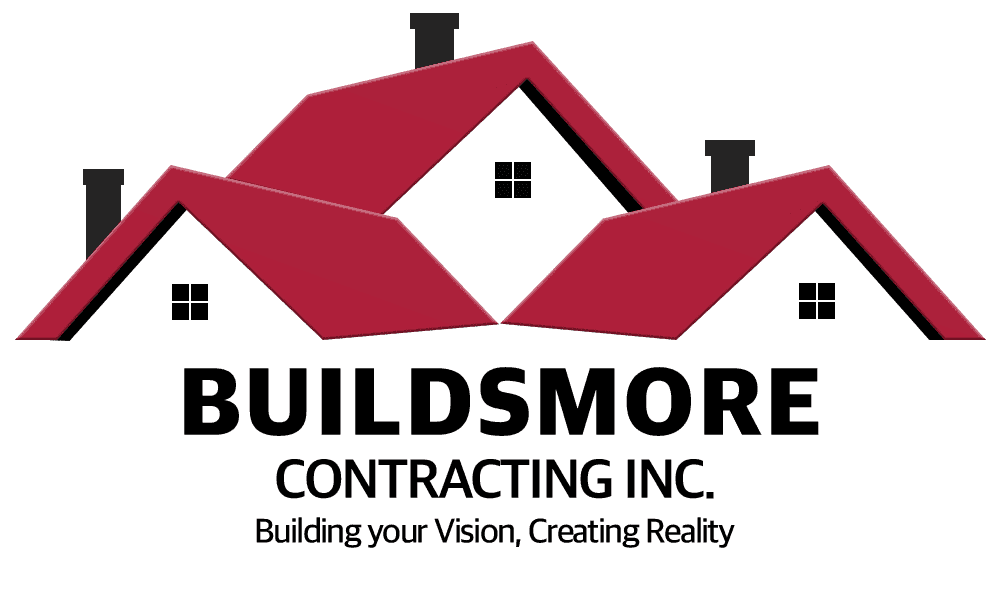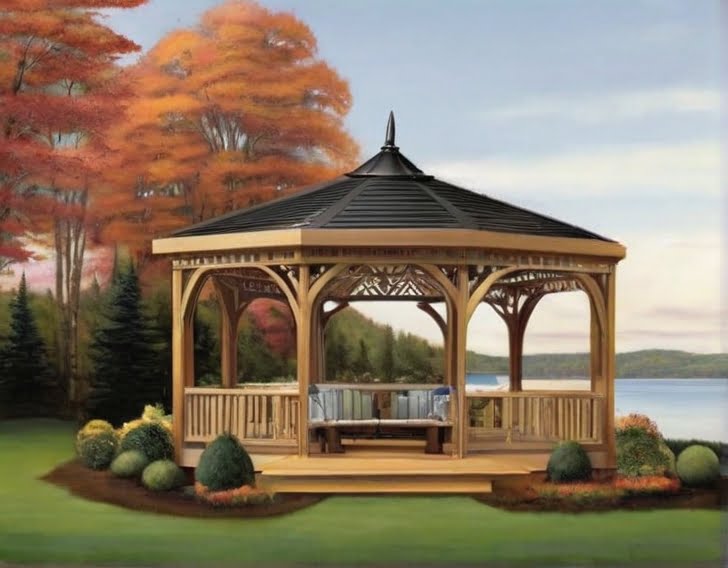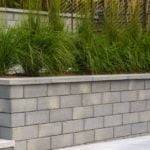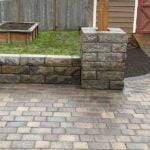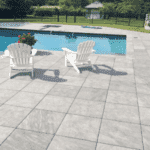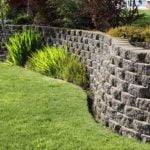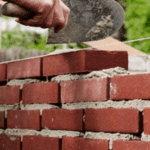In the world of construction and remodeling, the addition of a gazebo can transform an outdoor space into a haven of beauty and functionality. If you’re considering gazebo construction, you likely have questions about its definition, cost, structure, utility, and the best materials to use. This guide aims to provide answers to these key questions, offering valuable insights into the art and science of Gazebo Construction.
What is a Gazebo in Construction?
A gazebo is a freestanding, open-sided structure that typically features a roof and is often placed in a garden or park. In construction terms, a gazebo is a standalone building that can serve various purposes, including providing shelter, enhancing the aesthetics of outdoor spaces, and creating a focal point for social gatherings.
Gazebo construction involves careful planning and execution to ensure the structure complements its surroundings while meeting the functional needs of the space. If you’re looking to embark on a gazebo construction project, consider consulting professionals like BuildsMore Construction, experts in crafting customized gazebos that harmonize with your vision and preferences.
How Much Does It Cost to Build a Gazebo?
The cost of building a gazebo can vary widely based on several factors, including size, materials, design complexity, and labor. On average, homeowners can expect to invest anywhere from $1,500 to $10,000 or more for gazebo construction.
Factors influencing costs:
Size:
Larger gazebos generally require more materials and labor.
Materials:
The choice of materials significantly impacts costs. Common materials include wood, metal, and vinyl.
Design:
Elaborate designs may involve more intricate construction processes, affecting overall costs.
For a more accurate estimate, it’s advisable to obtain quotes from reputable contractors who can assess your specific requirements and provide a tailored cost estimate.

What is the Main Structure of a Gazebo?
Understanding the main structure of a gazebo is crucial for both homeowners and contractors. While designs can vary, a typical gazebo consists of the following key components:
Foundation:
The foundation supports the entire structure. Common options include concrete slabs, pavers, or footings.
Posts and Beams:
These vertical elements support the roof and provide the gazebo’s basic framework.
Roof:
Gazebo roofs come in various styles, such as hip, pyramid, or pagoda. Roofing materials can range from shingles to metal or thatch.
Railings:
Often decorative, railings add safety and visual appeal. They enclose the open sides of the gazebo.
Understanding these components empowers homeowners to make informed decisions during the planning and construction phases.
Why is a Gazebo Useful?
Gazebos offer a myriad of benefits that contribute to their popularity in the construction and Remodeling industry:
Versatility:
Gazebos can serve multiple purposes, from providing a shaded retreat to hosting social events and outdoor dining.
Aesthetics:
These structures enhance the visual appeal of outdoor spaces, acting as focal points in gardens, yards, or parks.
Increased Property Value:
Well-designed and constructed gazebos can add value to a property, making it more attractive to potential buyers.
Outdoor Living:
Gazebos create an extension of indoor living to the outdoors, allowing homeowners to enjoy nature without compromising comfort.
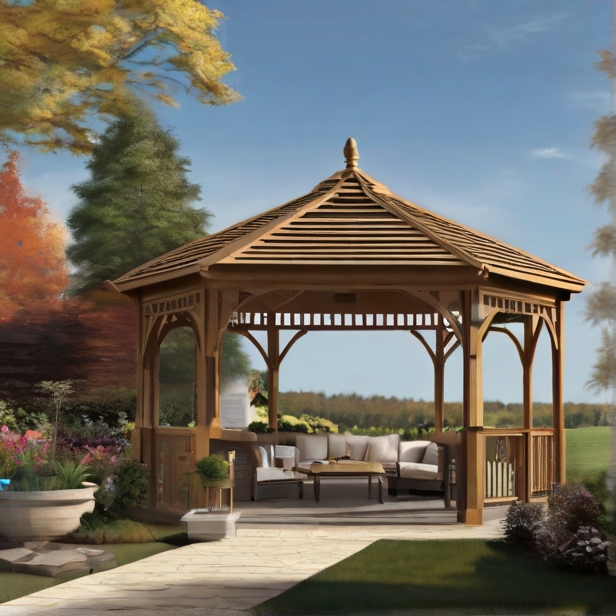
What is the Best Material for a Gazebo?
Choosing the right material for your gazebo is a critical decision that affects both aesthetics and longevity. Here are some common materials used in gazebo construction:
Wood:
Classic and versatile, wood gazebos offer a natural and warm appearance. Cedar and redwood are popular choices due to their resistance to decay and insects.
Metal:
Aluminum and steel gazebos are durable and require minimal maintenance. They are ideal for modern designs and can withstand various weather conditions.
Vinyl:
Low-maintenance and affordable, vinyl gazebos resist rot, insects, and fading. They are a practical choice for those seeking a hassle-free option.
Composite Materials:
Combining wood fibers and plastic, composite gazebos offer the best of both worlds – the natural look of wood and the durability of plastic.
Ultimately, the best material depends on your preferences, budget, and the specific conditions of your outdoor space.
Conclusion
Embarking on a gazebo construction project is an exciting journey that involves careful planning and consideration of various factors. Whether you envision a quaint garden retreat or a grand outdoor entertainment space, understanding the intricacies of gazebo construction is essential.
For expert guidance and craftsmanship, consider reaching out to BuildsMore Construction, a trusted name in the construction and remodeling industry. Their expertise in gazebo construction ensures a seamless process, from conceptualization to realization, bringing your outdoor vision to life.
In conclusion, a well-constructed gazebo not only enhances the aesthetics of your property but also adds value and functionality to your outdoor space. Take the first step towards creating your oasis by exploring the possibilities of gazebo construction in the construction and remodeling industry.

